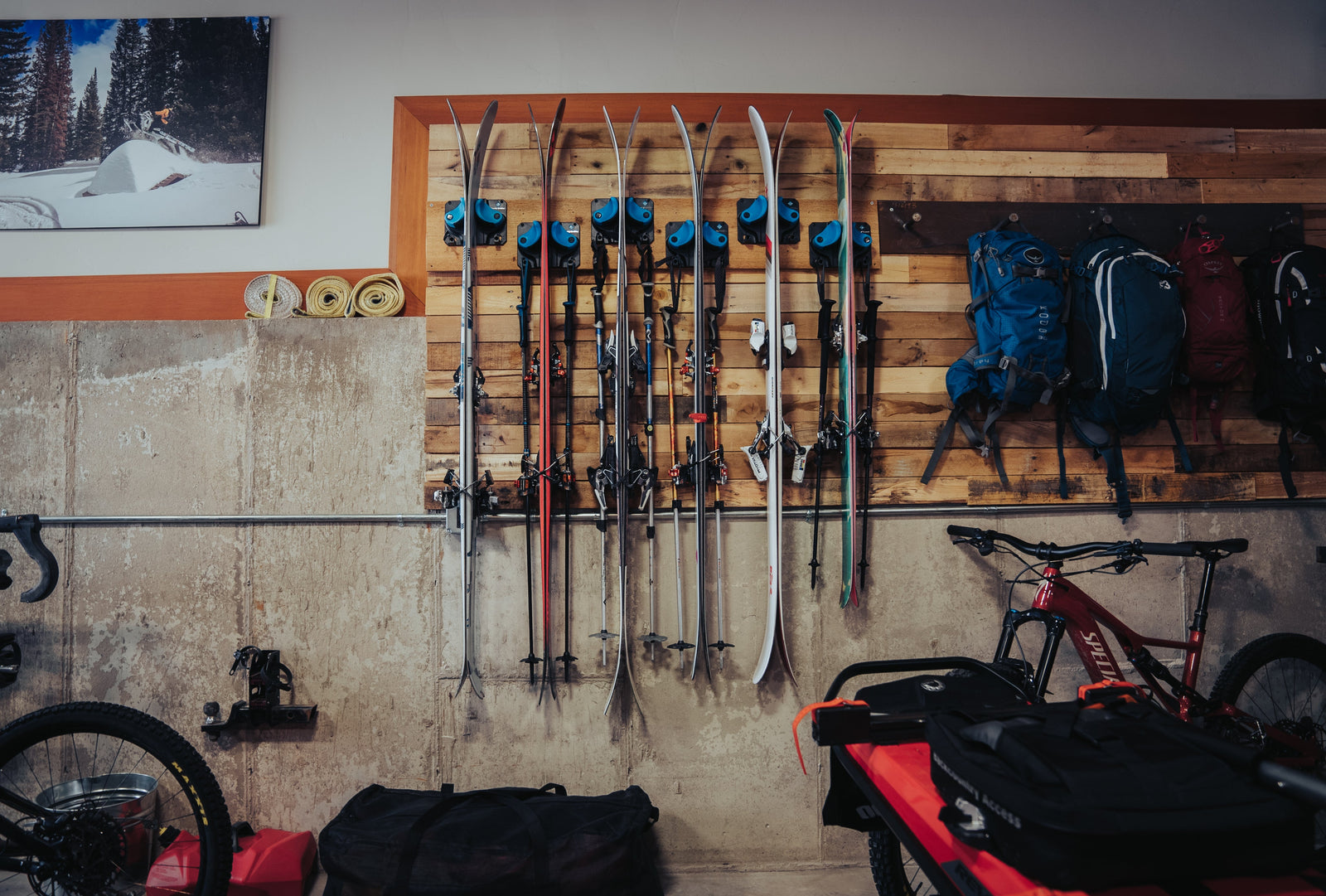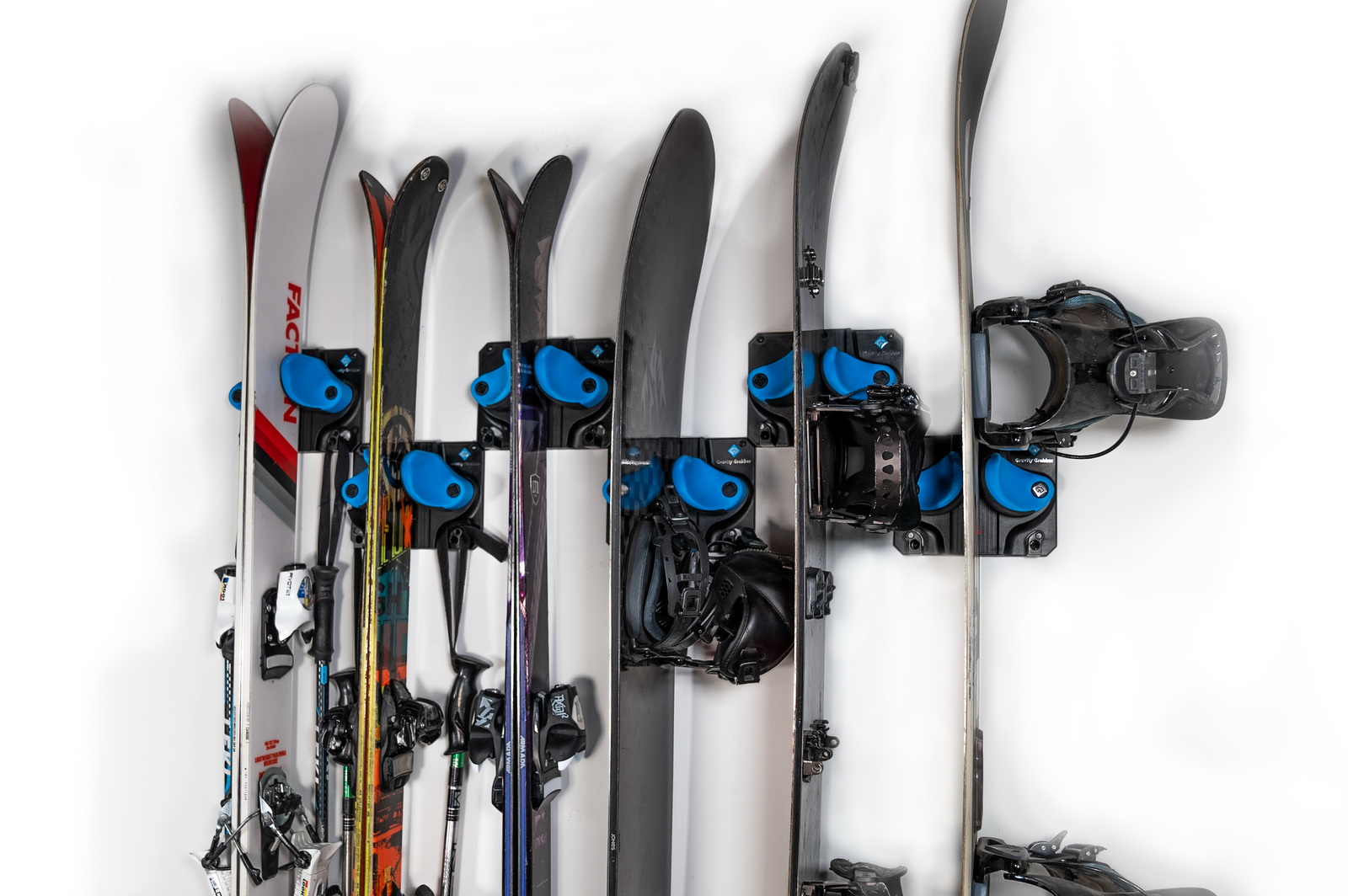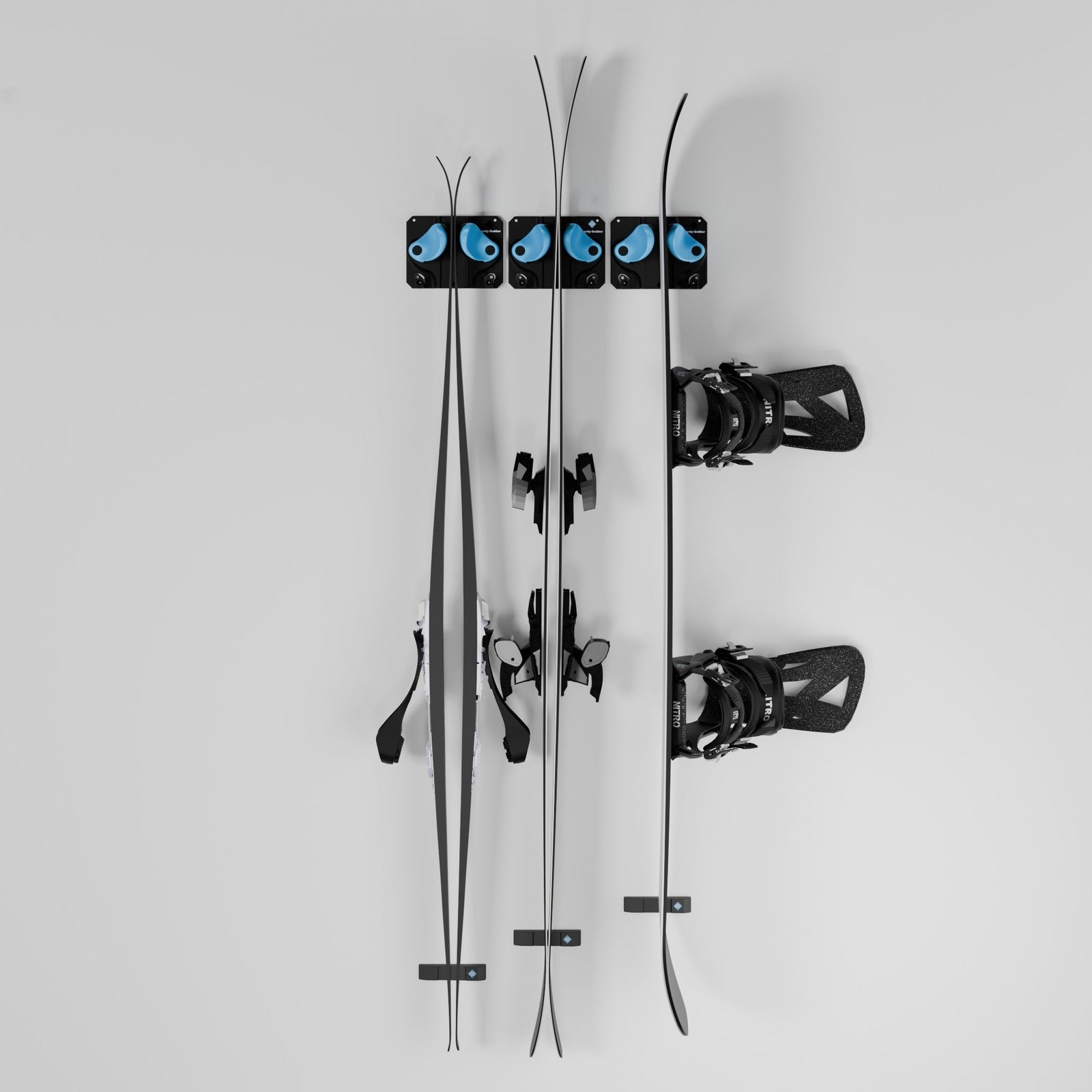Why Ski Warping Happens
Skis are built to flex in specific ways. That camber or rocker profile is what makes them glide, carve, and float on snow. But when skis are stored incorrectly—especially for long stretches—their shape can slowly distort. This is called ski warping, and once it sets in, there’s no real way to reverse it.
The most common culprits include:
-
Leaning Skis Against Walls: Uneven pressure bends them over time.
-
Stacking in Piles: Weight from other gear compresses the camber.
-
Moisture Exposure: Melting snow or humid garages can weaken materials.
-
Heat and Sunlight: Direct sun or warm garages can soften glues and composites.
The result? Skis that don’t respond like they used to. They might feel sluggish, lose edge grip, or handle unpredictably on hardpack.
Why Preventing Warping Matters
A good pair of skis isn’t cheap. Even mid-range models cost hundreds of dollars, and high-end skis climb past a thousand. When they warp, they’re not just harder to ski on—they’re essentially ruined.
Preventing warping means:
-
Protecting Your Investment: Skis last longer and perform better.
-
Consistent Performance: Edge grip, flex, and responsiveness stay true.
-
Peace of Mind: You don’t need to wonder if your gear will let you down mid-season.
Best Practices for Preventing Ski Warping
Fortunately, preventing warping doesn’t take much effort. A few storage habits make a big difference:
-
Store Skis Vertically
Keep skis upright and supported so they don’t lean at extreme angles. Vertical storage minimizes uneven pressure and stress on the camber. -
Keep Them Off the Ground
Standing skis on concrete or damp floors invites moisture problems. Elevating them prevents water damage and keeps edges sharper. -
Avoid Stacking or Piling
Don’t lay skis flat under heavy gear. Even light pressure can compress them when left for weeks. -
Dry Before Storing
Always wipe skis down after use. Removing moisture prevents rust and glue breakdown inside the ski’s layers. -
Store in a Cool, Dry Space
Basements, garages, and closets all work—just avoid direct sunlight, hot attics, or damp corners.
The Role of Ski Storage Systems
Here’s the tricky part: it’s hard to consistently store skis correctly without some kind of system. Most garages aren’t designed for them, and leaning them against walls feels like the easiest option in the moment. That’s why ski storage systems are worth considering.
Unlike basic hooks, a good storage system is designed to:
-
Hold skis securely without pressure points.
-
Keep them separated from other gear.
-
Lift them away from the ground and moisture.
-
Make them easy to grab and put away.
How Gravity Grabber Helps Prevent Warping
The Gravity Grabber takes all of these principles and builds them into a simple wall-mounted solution. Instead of leaning skis or piling them up, it suspends them vertically with padded arms that grip without damage. This design:
-
Eliminates Leaning: Skis stay straight, not bent.
-
Keeps Bases Dry: Elevation avoids floor moisture and rust.
-
Protects Edges and Topsheets: Soft grips prevent scratches and pressure points.
-
Saves Space: By mounting on the wall, it clears clutter and organizes other gear.
In other words, it turns “good habits” into the default. Even if you’re tired after a day on the slopes, storing skis properly becomes as easy as sliding them into place.
Beyond Skis: Full Gear Protection
While designed with skis in mind, the Gravity Grabber also works for snowboards, poles, paddles, and even yard tools. That versatility makes it especially useful for families or athletes who juggle multiple sports. It’s not just preventing ski warping—it’s creating an organized, functional space for all your gear.
Conclusion: Protect Shape, Protect Performance
Ski warping is a silent killer of gear. It doesn’t happen all at once, but over weeks or months of poor storage, your skis lose the shape that makes them perform. By keeping them vertical, dry, and off the ground, you protect both their longevity and your investment.
Whether you build a DIY rack or use a purpose-built system like the Gravity Grabber, the key is consistency. Smart storage today means reliable performance when the snow calls again tomorrow.




